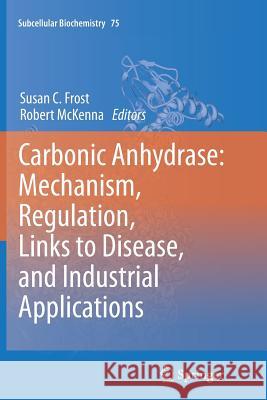Carbonic Anhydrase: Mechanism, Regulation, Links to Disease, and Industrial Applications » książka
topmenu
Carbonic Anhydrase: Mechanism, Regulation, Links to Disease, and Industrial Applications
ISBN-13: 9789402402506 / Angielski / Miękka / 2016 / 430 str.
Carbonic Anhydrase: Mechanism, Regulation, Links to Disease, and Industrial Applications
ISBN-13: 9789402402506 / Angielski / Miękka / 2016 / 430 str.
cena 605,23
(netto: 576,41 VAT: 5%)
Najniższa cena z 30 dni: 578,30
(netto: 576,41 VAT: 5%)
Najniższa cena z 30 dni: 578,30
Termin realizacji zamówienia:
ok. 22 dni roboczych
Dostawa w 2026 r.
ok. 22 dni roboczych
Dostawa w 2026 r.
Darmowa dostawa!
These are structurally related to the beta CAs, but have a mechanism more similar to the alpha CAs.











